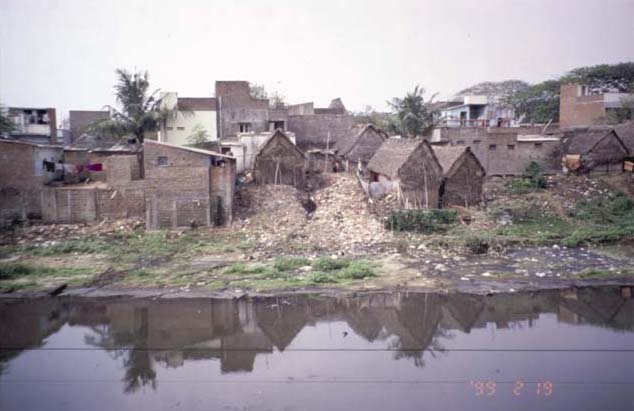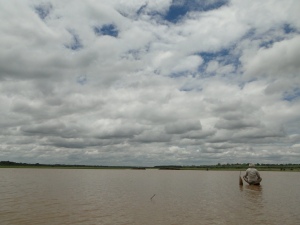Karnataka
An openwell as a source of water in Bangalore city
Posted on 27 Jun, 2011 04:48 PMAshwas process handbook - A planning and execution guide for participatory surveys of household water and sanitation
Posted on 25 Jun, 2011 04:31 PMThe handbook was created as a result of several organisations expressing their interest in conducting an exercise similar to ASHWAS. The purpose of this handbook is thus to serve as a template for those wishing to carry out a similar effort in the other parts of the country.
Five years of special economic zones in India' - lecture by Dr. Partho Sarothi Ray, National Institute of Advanced Studies, June 27, 2011, Bangalore
Posted on 23 Jun, 2011 05:11 PM Organizer: National Institute of Advanced Studies
Organizer: National Institute of Advanced Studies
Venue: Lecture Hall, NIAS, IISc Campus, Bangalore
Description:
Five years have passed since the first United Progressive Alliance (UPA) government passed the Special Economic Zones (SEZ) Act in 2005. Altogether there are around 1200 SEZs in different phases of development today. Analyzing the development and distribution of SEZs in different parts of India in the last five years gives us some ideas about the political geography of special economic zones in India.
This talk will draw on this analysis and the personal experience of the speaker in struggles against various SEZs in India including the proposed POSCO SEZ in Orissa which has received a very strong farmers’ resistance.
Soil biotechnology installation and water interventions at ACCEPT Society, Bangalore - Videos by Arghyam
Posted on 23 Jun, 2011 12:15 PM
Water interventions in the society
The society is an AIDS care hospice of about 5 acres, on the outskirts of Bangalore.
Student Conference on Conservation Science – Bangalore 2011, September 14 – 16, 2011, Indian Institute of Science, Bangalore
Posted on 23 Jun, 2011 12:13 PMOrganizer: Student Conference on Conservation Science, IISc
Venue: JN Tata Auditorium, Indian Institute of Science, Bangalore
Description:
The Student Conference on Conservation Science (SCCS) – Bangalore brings together young researchers in conservation science to facilitate interaction, encourage exchange of research ideas and methods, and help build contacts and capacity. SCCS-Bangalore focuses on attracting students primarily from countries in South and South-east Asia.
Urban floods in Bangalore and Chennai – Risk management challenges and lessons for sustainable urban ecology – A paper in Current Science
Posted on 22 Jun, 2011 10:23 PM Two important metro cities of India, viz. Bangalore and Chennai are discussed. The aim of the study was to understand the problems of increasing flooding incidences in urban areas and related contexts of urban development and ecological issues. Data of secondary origin have been collected and interpreted in the context of flood risks and urban management. The paper also conveys wider issues and lessons for flood challenges in Indian cities and towns.
Two important metro cities of India, viz. Bangalore and Chennai are discussed. The aim of the study was to understand the problems of increasing flooding incidences in urban areas and related contexts of urban development and ecological issues. Data of secondary origin have been collected and interpreted in the context of flood risks and urban management. The paper also conveys wider issues and lessons for flood challenges in Indian cities and towns.
A citizen initiative to save Puttenahalli Lake in JP Nagar, Bangalore
Posted on 22 Jun, 2011 11:50 AMResidents of L&T South City and Brigade Millenium in JP Nagar, Bangalore formed a citizen initiative to save the neighbouring Puttenahalli Lake from becoming a dumping ground for construction debris and waste. A team from India Water Portal visited the lake in June 2011 to see the progress and challenges faced by such citizen initiatives.
Biodiversity, ecology and socioeconomic aspects of the Gundia river basin in the context of the proposed mega hydroelectric power project - A CES technical report
Posted on 21 Jun, 2011 11:23 PMThis report by the Centre for Ecological Sciences, Indian Institute of Science, Bangalore highlights and argues for the the case of saving the Gundia river, one of the most important tributaries of the river Kumaradhara in Hassan district in Karnataka, which is known for its very rich vegetation and biological wealth. This is in the context of the proposal put forward by the Karnataka Power Corporation Limited to implement the Hydroelectric project (GHEP) on the river.
Where our rivers begin - Water literacy for urban India
Posted on 20 Jun, 2011 12:37 PM
 Fisherman on Hessarghatta Lake on the Arkavathy River
Fisherman on Hessarghatta Lake on the Arkavathy River
It is here in a small pond that the Arkavathy river is famously said to originate. It moves down the hill in the form of a spring and enters the first of the man-made reservoirs, called ‘tanks’, the Chikkarayyappanhalli Kere. From thence begins the journey of this tributary to the Cauvery. Passing through a series of tanks built to hold its water for irrigation it comes to the large ‘Nagarakere’ at Dodballapur. The entire drinking water for the town of population 100,000 used to come from this large tank. Moving further on the river comes to the almost 7 sq.km. Large Hessarghatta tank. In 1894 this tank was enlarged and became the first external source of water supply to the city of Bangalore.